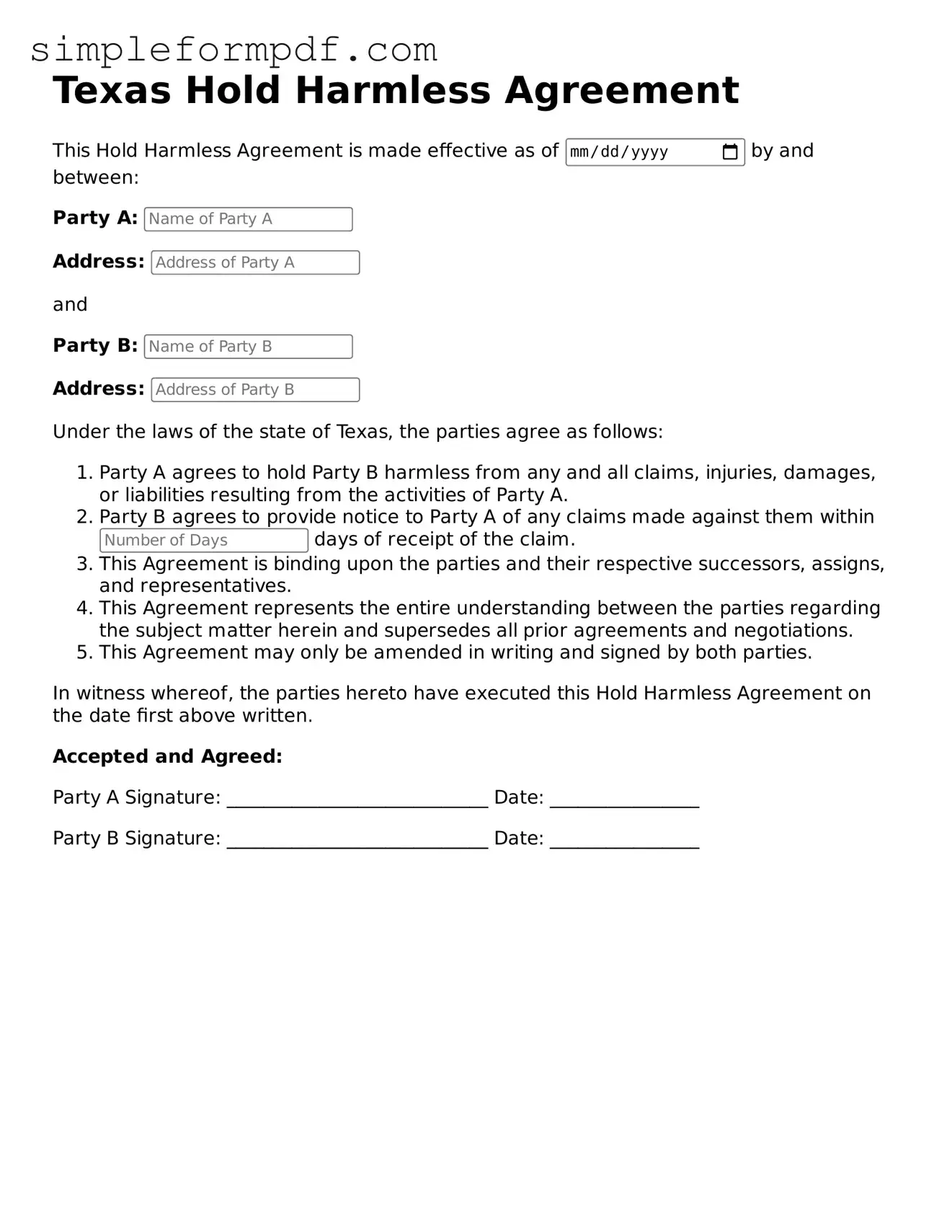Free Hold Harmless Agreement Form for the State of Texas
A Texas Hold Harmless Agreement is a legal document that protects one party from liability for damages or injuries that may occur during a specific activity or event. This agreement ensures that the other party assumes responsibility for any potential risks involved. If you need to fill out this form, click the button below.
Launch Editor
